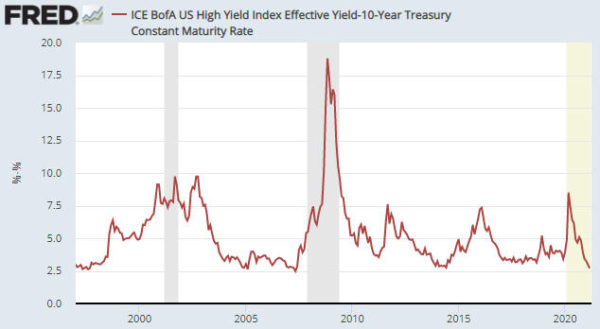[This blog post is an excerpt from a report published at the TSI website on 25th April]
The US stock market was reminded last Thursday that the Biden Administration plans to increase taxes to cover part of the cost of its spending proposals. This caused a pullback in the S&P500 Index (SPX) that lasted only a few hours. The next day the tax risk was forgotten and a marginal new all-time high was recorded. Does this mean that the stock market is immune to higher taxes?
Before we answer the above question it’s worth pointing out that there always will be a substantial economic cost to a substantial increase in government spending, regardless of the method used to pay for the spending. Of the three possible payment methods an increase in taxes is probably the most honest, because it’s the method that makes the cost of the spending most obvious to everyone.
Another method of paying for an increase in government spending involves adding to the government debt pile via the sale of bonds to the private sector. As discussed in a TSI blog post last week, the main cost associated with this method is the transfer of private-sector investment to government spending.
In essence, when taxes are hiked to pay for increased government spending then the cost to the economy is a reduction in private-sector income, whereas when debt is used to pay for increased government spending then the cost to the economy is a reduction in private-sector investment. Both methods will hinder economic progress.
The third method is to use “inflation”, a.k.a. “financial repression”, to pay for the spending. This is what happens when the central bank monetises the bulk of the debt issued by the government to finance an increase in its spending. In effect, the real value of the debt is lessened over time by depreciating the money in which the debt is denominated. This causes a reduction in average living standards due to an increase in the cost of living relative to wages. It also magnifies economic inequality because it hurts the asset-poor to a far greater extent than it hurts the asset-rich. In fact, the asset-rich often profit from the debt monetisation process.
Returning to the question we posed in the opening paragraph, higher taxes or the risk of higher taxes could be the ‘excuse’ for the intermediate-term stock market correction we think will happen during the second half of this year. However, we doubt that tax increases will reverse the market’s long-term trend. The reason is that the long-term upward trend in nominal equity prices is driven by the Fed’s idiotic belief that currency depreciation is helpful and the relentless flow of money into “passive” investment vehicles.
The most likely cause of a long-term trend reversal in the stock market is the general belief taking hold that inflation is “public enemy number one”. Until that happens, every substantial decline in the US stock market will be met with a flood of new money courtesy of the Fed.
 Print This Post
Print This Post

